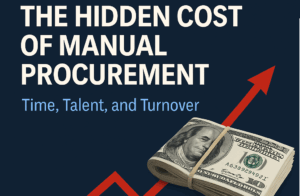In a world where demand can change overnight, disruptions ripple across continents, and competition never sleeps, companies clinging to outdated inventory planning practices are operating on borrowed time. The pace of global commerce has shifted — but many procurement and planning teams are still running monthly reviews in spreadsheets, relying on lagging indicators to make forward-facing decisions. That’s not just inefficient — it’s dangerous.
The Problem With Traditional Inventory Planning
Historically, inventory planning has relied on periodic reviews, fixed reorder points, and safety stock buffers derived from past demand. These strategies may have sufficed when supply chains were local and demand predictable. But in the age of omnichannel fulfillment, geopolitical instability, and surging customer expectations, those tactics fall flat.
Consider this: in 2023, a Gartner survey revealed that 61% of supply chain leaders felt their planning tools were insufficient for real-time decision-making. Most organizations simply weren’t equipped to adapt dynamically to changing customer needs, transport delays, or supplier volatility.
Spreadsheets — still shockingly common in many mid-sized organizations — lack the ability to process high-frequency data or model complex interdependencies. As a result, planners are left reacting to yesterday’s information when today’s disruptions are already in motion.
Real-Time Inventory Planning: The New Imperative
Real-time inventory planning is more than a buzzword. It’s a fundamental shift from static forecasts to dynamic responsiveness — a move that allows companies to sense, analyze, and respond to change as it happens.
Real-time planning empowers organizations to:
- Monitor demand shifts instantly and adjust replenishment orders accordingly.
- Trigger alerts when stockouts, delays, or overstock risks are detected.
- Reallocate inventory between locations or channels based on live conditions.
- Synchronize upstream procurement with downstream fulfillment realities.
For example, Zara, the fast-fashion giant, famously shortened its entire design-to-shelf cycle to just 15 days by integrating real-time data from stores directly into production decisions. This responsiveness helped them reduce markdowns and excess inventory — two key cost drivers during downturns.
Integrating Real-Time Tools with MRP
To be clear, real-time inventory planning doesn’t mean replacing your ERP or MRP system. It means enhancing it. Most legacy MRP systems were built for static data entry and weekly or monthly batch processing. But modern cloud-native planning platforms can now overlay these systems to provide:
- Live data feeds from POS systems, e-commerce channels, and IoT-enabled warehouses.
- Automated replenishment recommendations based on actual demand, not forecasted demand.
- Dynamic supplier lead time adjustments based on historical delivery performance.
- Scenario modeling to simulate what-if cases (e.g., port delays, demand spikes, raw material shortages).
For instance, Unilever has used predictive inventory planning and real-time data across its global operations to improve customer service levels by 3% and reduce inventory by 5% — a huge win at their scale.
Likewise, Procter & Gamble has leveraged AI-enhanced planning systems to generate automated purchase proposals, reducing human error and speeding up decision-making.
Why “Always On” Planning Matters
Supply chains have become less linear and more interdependent. A factory fire in Taiwan can halt production in Detroit. A TikTok trend can triple demand for a product overnight. A missed vessel can ripple across six months of supply.
With so much volatility, it’s no longer viable to wait for a monthly S&OP meeting to react. Instead, organizations must create an “always-on” planning culture — where inventory, procurement, production, and sales continuously feed and inform each other.
A McKinsey study found that companies with real-time supply chain visibility reduced inventory costs by up to 20% and improved service levels by 5–10%. In contrast, companies relying on outdated planning processes were slower to recover from disruptions — often losing market share to more agile competitors.
Getting Started: Tips for Transitioning to Real-Time Planning
Shifting to real-time inventory planning doesn’t require a complete system overhaul. Here’s how to begin:
- Identify high-volatility SKUs: Start by applying real-time monitoring to your most critical or most volatile items.
- Automate data collection: Eliminate manual entry by integrating sensors, POS systems, e-commerce platforms, and supplier feeds.
- Layer analytics onto your MRP: Use planning overlays that can work in tandem with your current MRP for scenario modeling and automated decision support.
- Set dynamic safety stock rules: Instead of fixed buffers, let historical volatility, demand seasonality, and supplier risk define your safety stock levels.
- Empower planners with alerts: Don’t wait for a crisis. Equip teams with auto-alerts for low inventory, late orders, or demand anomalies.
Conclusion: React Faster, Plan Smarter
Today’s competitive edge is defined not just by what you make or sell, but by how fast and accurately you adapt. Companies that shift to real-time inventory planning will enjoy faster decision cycles, fewer stockouts, less excess, and better service levels.
If your current planning cadence is measured in weeks, you’re losing ground to companies measuring theirs in minutes.
It’s time to leave yesterday’s data behind — and start planning in real time.
**********
Author: Ed Danielov
Publication Date: September 11, 2025
© Copyright 2025 Perfect Planner LLC. All rights reserved.
References
- McKinsey & Company (2023). The Future of Supply Chain Planning: A Roadmap for Resilience
- Gartner (2023). Modernizing Inventory Planning Tools for Volatile Supply Chains
- Harvard Business Review (2023). Why Agile Supply Chains Win in Uncertain Times
- Business Insider (2020). How Zara Built the World’s Fastest Fashion Supply Chain
- Forbes (2022). How P&G Leverages AI in Procurement and Inventory Planning
- Supply Chain Dive (2024). Unilever’s Inventory Optimization Drives Profitable Growth






